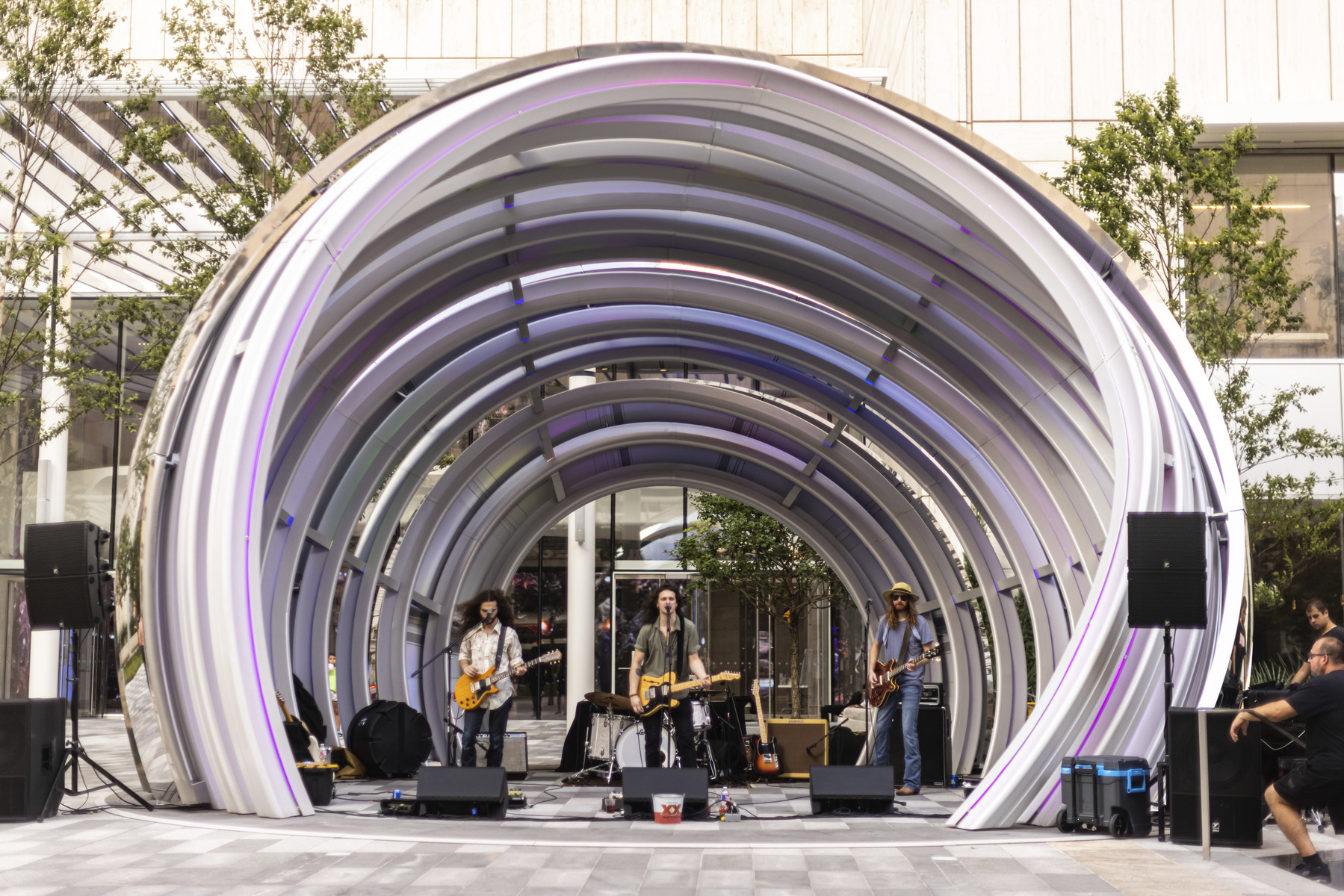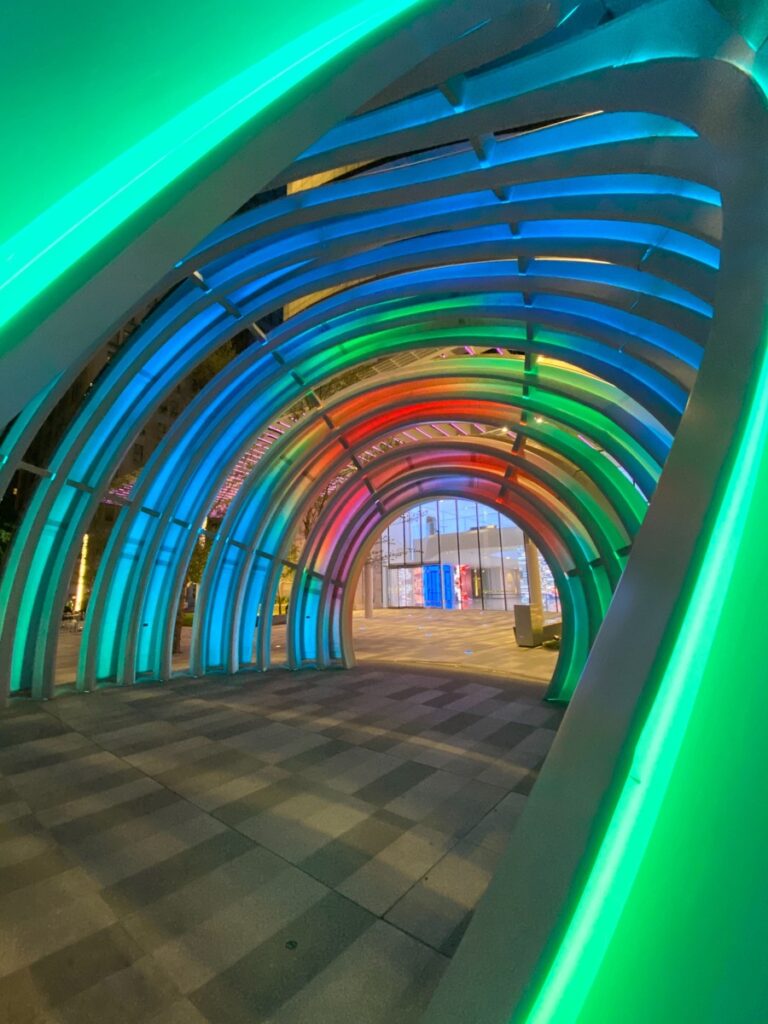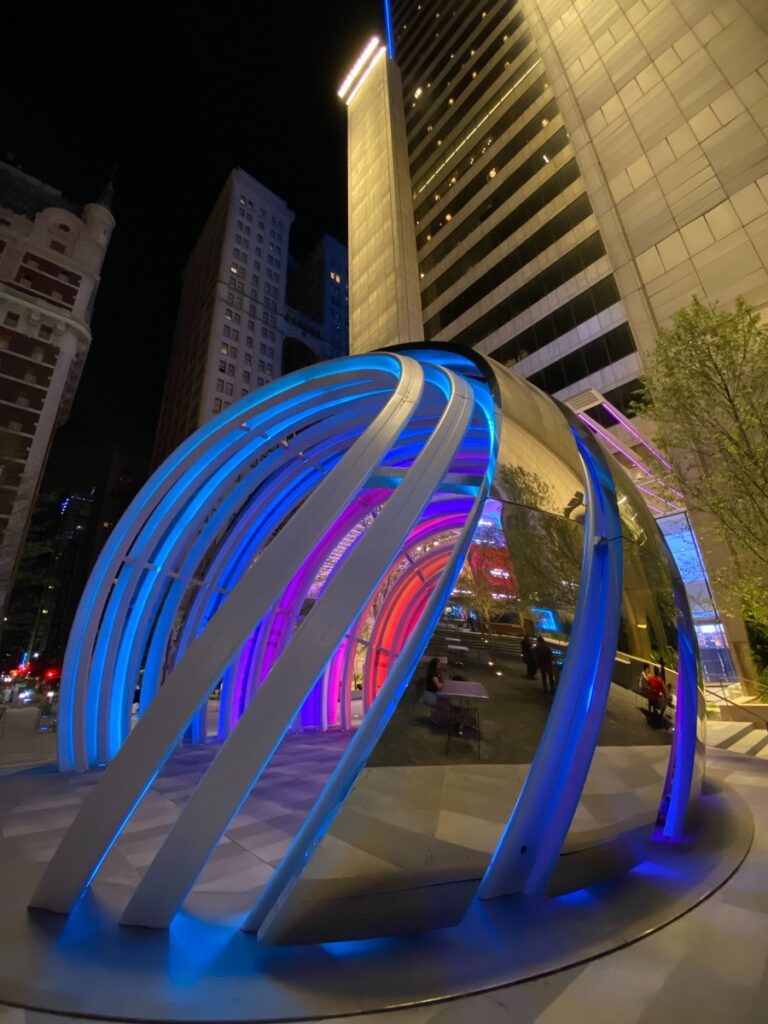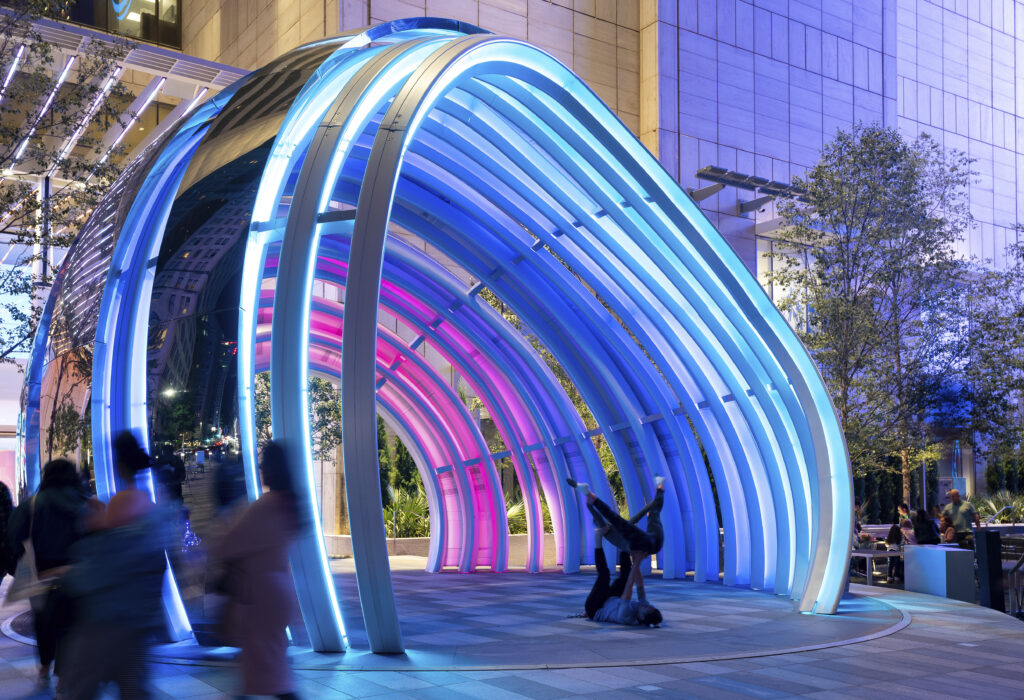The Globe
 Image provided by Gensler
Image provided by Gensler
“Just meh.” That’s one TripAdvisor review you could come across when considering a visit to The Globe at the AT&T Discovery District. And I understand that, in a way. You anticipate an installation hailed as “innovative” and “iconic,” and you’re met with mirrored, sculpted metal and LED lighting. Most of us already have delightfully distorted selfies â la Cloud Gate buried in our camera rolls, and we’ve watched Dallas’s LED-laden skyline illuminate the evening with swaths of blue and green in coordinated celebration of a Mavericks victory. Mirrored metal and rainbowed refulgence – been there, done that. Meh indeed.
One of the former core members of the design team at Gensler that delivered The Globe, architect Andrew Triplett, wouldn’t blame you. “The best stories in architecture are the ones that nobody notices,” he says. Well, for better or worse, you’ve outdone yourself with that philosophy, Triplett. Because somebody can understandably approach The Globe, watch the light cycle, and then leave ultimately underwhelmed.
But where’s the discovery in that?
Try entering The Globe with a group of a dozen others and being the last to leave. As the penultimate visitor clears The Globe’s footprint, a signal is sent to every piece of interconnected content in the plaza – the floors, the lobby, the trellises, the jumbo screen, the façades – and boom! A moment of magic. You watch the plaza blaze as you alone occupy the covert hub of the sensors, lasers, and myriad other technological tools that just metricized one of the dozens of Easter eggs one can experience within the district. And you didn’t even know you triggered it.


You probably also didn’t know that The Globe’s design is almost mathematically impossible. Triplett explains the precarious bends and twist of the metal ribs as wrapping a piece of paper around a baseball…but making it perfectly smooth. Exhaustive consultations with local and national fabricators reported the same bad news: “This cannot be done.” Naturally, the Gensler team expanded their search radius.
In the internet’s dusty attic, they finally found Inductaflex, a UK-based company whose website boasts advanced technology in metal bending but neglects to mention they serviced Zaha Hadid’s Al Janoub Stadium, among other formative architectural ventures. The uniquely qualified Inductaflex team accepted the challenge and created a new machine to meet The Globe’s unique architectural demands.
But it wasn’t smooth sailing from there. The only plant with a die big enough to extrude tempered aluminum to Inductaflex’s specifications is in Belgium. There, the aluminum is shaped through what can only be described an industrial Play-Doh squeezer. And then the clock starts ticking. The tempered aluminum is shipped from Belgium to Inductaflex’s operations in England, where now stands a custom kiln so the 7,000 unique parts can be assembled before the aluminum’s malleability window closes – a 38-foot anomaly feverishly constructed inside a 40-foot-tall warehouse under a ticking clock. And it works.
The structure was later disassembled, shipped to Dallas, and deposited on the lawn of the AT&T campus, where Beck Construction executed final assembly of the 7,000 individual parts. But come on, you didn’t think this was the easy part, right? The Globe also rotates. It rests atop a turntable that rotates up to 270 degrees to accommodate the plaza’s diverse entertainment programming. Oh, and beneath the turntable lies not solid earth, but a concourse, eliminating the deployment of a conventional crane for assembly. The solution: use a 500-ton crane, and park it across the street.
Don’t forget the speakers, lasers, sensors, and 2,000 linear feet of lights placed so strategically within the aluminum ribs that they become invisible, all feeding to a nose cone that must hit dead center and exactly 5’8” off the ground – the average height of a person’s eyeline. Brett Paulos, formerly with Beck and the project manager at the time says, “I’ve built a lot of projects from stadiums to wastewater treatment plants that have difficult feed process and a lot of complexity, and [The Globe] remains one of the most complex projects.”

“How?” is my question. How in the world did they pull this off? Both Triplett and Paulos acknowledge parametric design as an actuator. “We only had design and construction administration…because of the speed of the project,” Triplett says. “The general contractor weighed in from the beginning. And we were dealing with budgets, fabrication, the DXD team, lighting designers, electricians, content management people. We had Inductaflex, our own team, turntable engineers. There were a lot of hands. So, we had to keep a really clear line of communication between all people.” And Paulos agrees, “We could not have hit the schedule with ‘design-to-build’ delivery. It was really more of a progressive-design-build project.”
Learning about The Globe from inception to actuation, I feel equal parts amazement and guilt. For I too have walked within its ribs, admired the effect of its mirrored finish and surges of light, and left thinking, simply, “Cool.” It is, after all, object architecture as a marketing moment for a Fortune 500 corporation. But I’ve realized the brilliant irony of it all. In a society where attention is currency and stimulation begets attention; The Globe holds back. It invites you in but doesn’t force you to stay, even though it harbors the design, technology, and innovation to do so. Refreshing. Instead of elbowing its way into the sensorial awareness of the people around it, The Globe awaits activation from the experiences of its visitors, a sort of catch-more-flies-with-honey approach to marketing. Brilliant.
Ok, TripAdvisor guy, you’re free to say “Meh,” but I say, “Marvelous.”